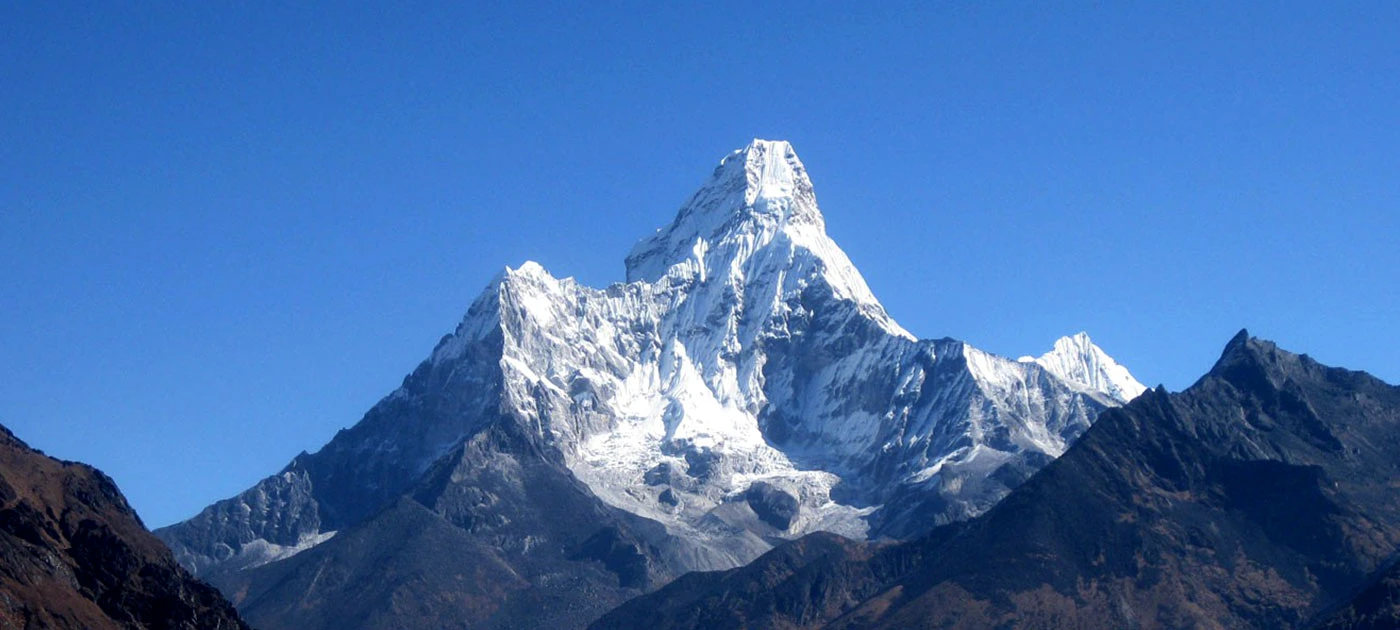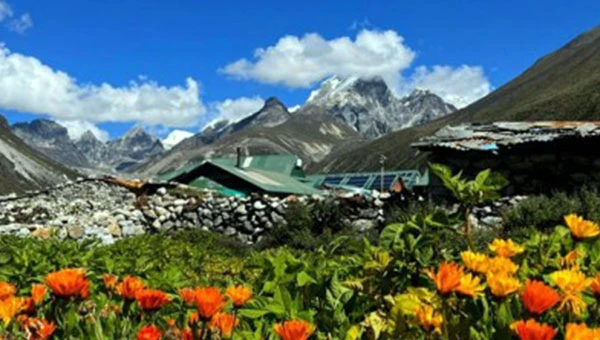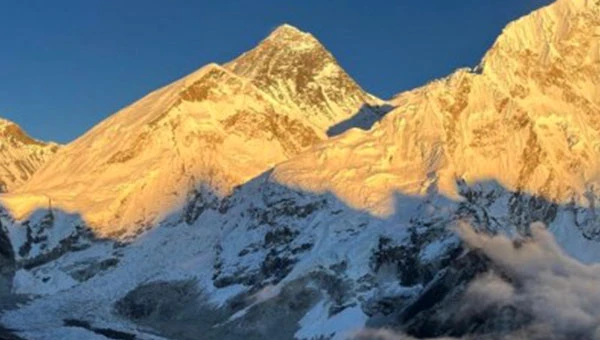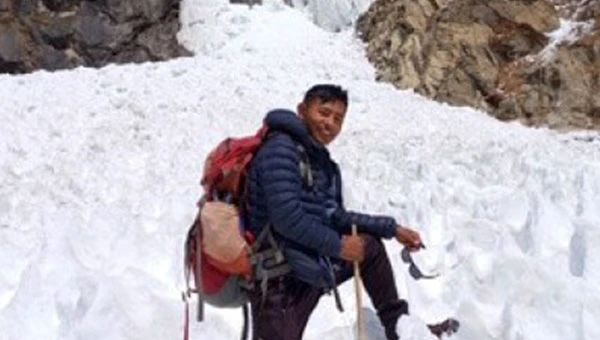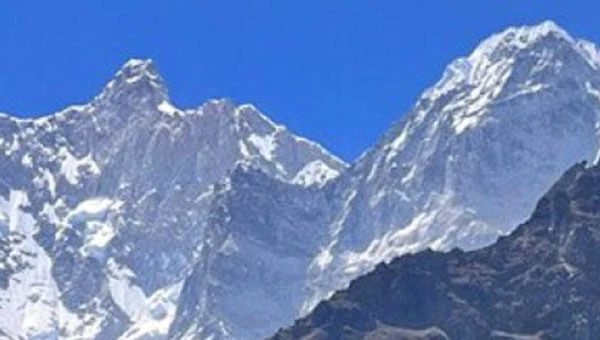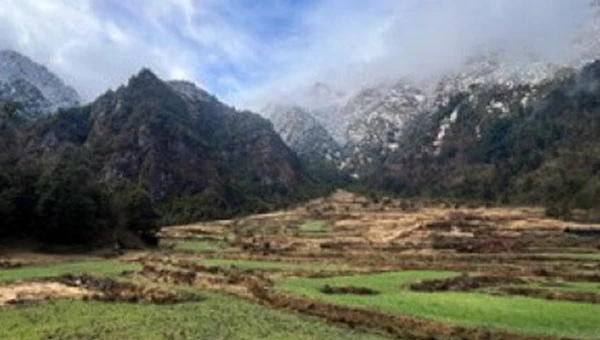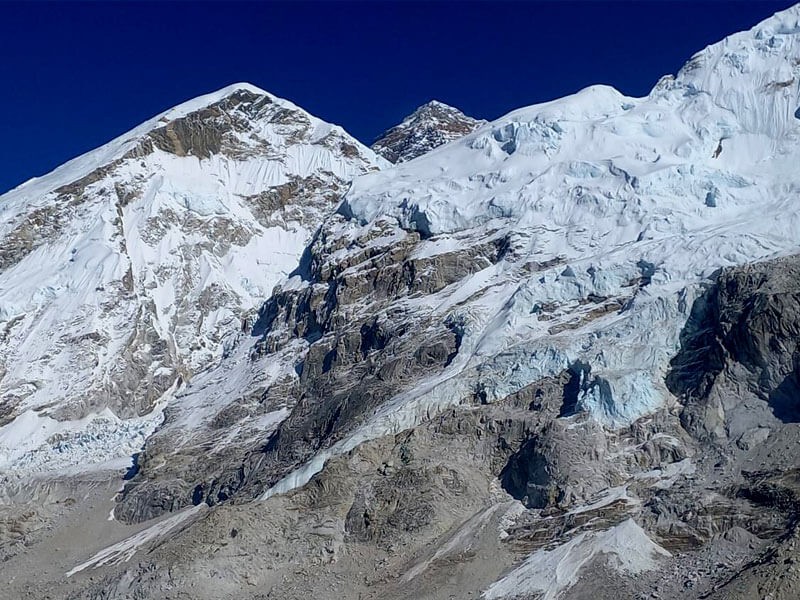
Before starting to pack for the Everest Base Camp Trek, you need to ensure that you have re-checked with the travel agency with whom you have confirmed your trip. Check what inclusions and exclusions of services and amenities are provided by the travel agency.
Remember to check the validity of your passport. For a VISA, you can either get it after you arrive at the Kathmandu International Airport or you can get it from the embassy in your country. You need to have a passport-size photo and cash for the VISA.
You also need local currency. Since it’s a closed currency, you can’t get it before entering the country. You can get the local currency from the foreign exchange desk at Kathmandu International Airport or an ATM.
Here’s the general checklist for the Everest Base Camp Trek.
Packing List for Everest Base Camp Trek
Everest Base Camp Trekking Equipment
You need to have this trekking equipment for the Everest Base Camp Trek. The right gear will enhance the overall trek experience, providing you with comfort and safety. So, ensure that you have standard and quality gear with you.
Backpack
The most important gear you need for the Everest Base Camp Trek is a backpack. It is because you need to carry it every day with essential items like water, extra layers, sunscreen, a camera, electronics, and snacks. A backpack of around 30 to 50 litres is highly recommended.
A backpack should be well-fitted with necessary side pockets and straps so that it distributes the weight evenly. This helps to reduce pressure on your back and shoulders, allowing you to enjoy ascending and descending the mountain trails.
Duffel bag
All your belongings will be in the duffel bag, including your sleeping bag. Your duffel bag shouldn’t be more than 10 kg. One porter will carry two duffel bags so as not to overload them. Moreover, the airlines also don’t allow carrying more than 15 kg in Lukla.
Rain Cover
The weather in the mountains is unpredictable and changes often, so it’s better to be prepared early. A rain cover is very important as it will cover the overall bag and protect your backpack from getting wet.
They are lightweight, cheap, and don’t take up much space in your backpack. In many backpacks, they are built in and made to fit well enough to cover your backpack.
Sleeping Bag
The temperature in the mountains during the night is usually cold, and sometimes it even gets to minus degrees. So for a warm sleep, a sleeping bag is a must-have. Your sleeping bag should handle lower temperatures, better if it handles -6° or -10°.
A sleeping bag should be lightweight, compressible, and durable with quality insulation material. The mummy-shaped sleeping bag is better as it is light and keeps your feet warmer.

You can rent a sleeping bag in Thamel, the bustling market for trekkers.
Sleeping Bag Liner
A sleeping bag liner provides you with more warmth and helps to keep the sleeping bag clean. A sleeping bag isn’t easy to wash, so many trekkers opt for liners. Remember, if you have a mummy-shaped sleeping bag, opt for mummy mummy-shaped liner too.
Note that if you rent a sleeping bag from Thamel, it’s better to buy a sleeping bag liner.
Trekking Poles
Trekking poles are a must-have while trekking in the mountains. The trails are steep, sloped, and rough or uneven surfaces, so trekking poles are of great use. They take off some weight from your knees on steep descents.
Note that trekking poles should have wristbands so they don’t fall and are lightweight to carry in a day pack.
Water Bottle
It’s important to stay hydrated in the mountains. Drinking plenty of water is also important to prevent altitude sickness, so a water bottle is a must-have.
A water bottle is useful at night. In high mountains, the water gets frozen at night, so trekkers normally put water in their bottles in the evening and keep it nearby so that in the morning, they can have drinkable water.
Clothing and Shoes
Appropriate clothing is essential while hiking in the mountains, where the weather is unpredictable. The most important thing to consider for clothing is layering. Putting clothes on layer by layer keeps the body insulated and protects it from the wind.
Base Layers
So, it is the inner layer or thermal layer that stays close to your body. Normally, the base layers are moisture-wicking, preventing the body from getting cold by sweating. They are made up of materials like polyester and nylon that keep you dry and provide warmth.
For ladies, choose your underwear and bras made up of polyester or nylon rather than cotton, as they are more breathable and moisture-wicking. Cotton clothes absorb sweat and stay wet and heavy.
Remember to make sure that these base-layer clothes are comfortable and stretchy, as you will wear them for the hike.
Middle Layers
The middle layers provide you with warmth by trapping the heat close to the body. It retains body heat and keeps you warm. Commonly, the middle layers of clothes include trekking shirts, trekking trousers, and a fleece jacket.
Since you wear them every day on the trek, make sure they are lightweight and breathable. We highly recommend you buy trekking trousers that can be easily zipped off. It is because the weather is changeable, and if you can layer on and on, it would be super easy.
Outer Layer
The outer layer is normally Gore-Tex or similar fabrics, which are waterproof and windproof materials. They protect you against wind, rain, and snow. These layers are breathable while maintaining the internal body temperature warm.
For the winter jacket, we recommend having the jacket made from down as it is lightweight and a great insulator to keep you warm even in the freezing temperatures of Khumbu. It will be an expensive purchase but worth it. You can rent one from Thamel, Kathmandu.
Trekking Boots
A good pair of trekking boots is a must to have for trekking in the high mountains, where the trails are rough, steep, and uneven. So a trekking boot should have a good grip, be lightweight, and be waterproof. Consider mid-cut or high-cut boots for better ankle support.
Many new trekking boots require a break-in period to conform to your feet, so it’s always better to wear them before your trek, so that you will have a comfortable journey ahead. Remember to have enough space for your toes to move in trekking boots.
Trekking Socks
Trekking socks are as essential as trekking boots; that’s why you should always opt for good socks of high quality. You could have cold feet if the socks aren’t warm enough. So I always have hiking socks and thermal socks. Hiking socks are made from synthetic materials like polyester or nylon, which are lightweight and dry quickly.
On the other hand, thermal socks are breathable with great insulation, keeping your feet warm, and it does prevent blisters. For mountain trails in the Everest region, opt for socks with more cushioning as they ease your walk.
It’s always a good idea to test your socks and boots combination on shorter treks or day hikes before trekking to Everest Base Camp.
Warm Hat
Normally, in the high mountains, it gets cold in the morning and evening. Moreover, you lose your body heat through your head, so it’s better to cover your head with a warm hat. A fleece or down hat is a good option to cover the head; however, the hat should be breathable, preventing overheating, so look for a moisture-wicking hat.
Remember to make sure that the hat isn’t too tight; it should be well-fitted and stay in place even in a windy environment.
Sun Hat
During the daytime, while hiking, you need a sunhat to block the sun's rays on your face. The sunhat won’t be as warm as the warm hat. However, it does protect your face from getting sunburnt.
The higher the elevation, the more harmful the sun's rays and their burning, so it is mandated to wear a sunhat in the daytime. Remember to have a sun hat with a drawstring for a windy afternoon.
Gloves
You need to have two kinds of gloves. Inner gloves to keep your hands warm and insulated. Make sure that they are moisture-wicking, whether your hands sweat or not. Waterproof gloves from the outside are also the most common. It is because sometimes there might be snow and ice, so for more warmth, put the waterproof gloves over the inner gloves.
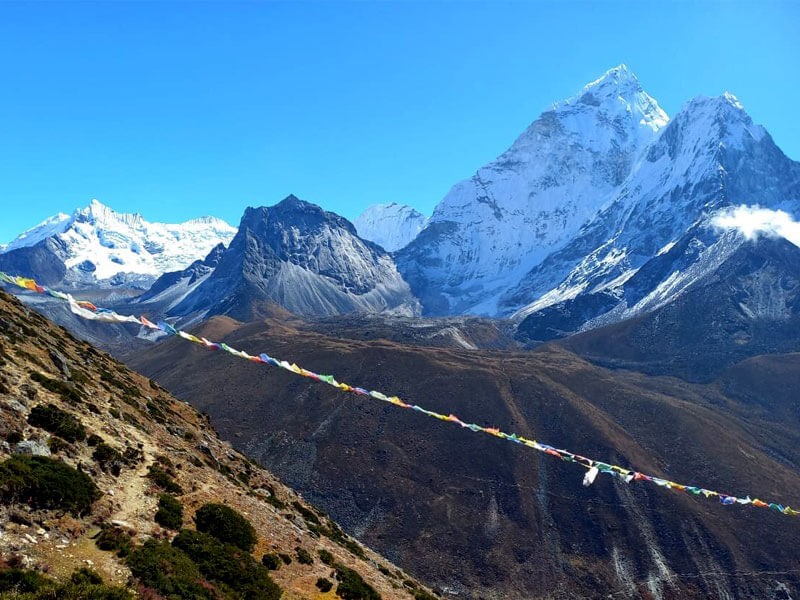
House Clothes and Sneakers
Here come the comfy yet warm clothes. In the teahouse, you will need comfortable and warm house clothes. The dining room will be heated with the fire, but your room will be cold, so pack warm clothes and warm socks for bed.
Don't forget a pair of lightweight sneakers you can wear in the teahouse because your feet also need to rest from close-fitted trekking boots like mine.
Other Essentials
Besides the trekking gear and equipment, you also need to pack other essential items for your trek to Everest Base Camp. Their presence might be a little helpful, but their absence would make your trip unpleasant.
Water Purification Tablets
Water Purification Tablets are designed to kill harmful microorganisms in water, making the water safe to drink. So, it is advisable to pack water purification tablets for drinking water. It is because it’s not safe for you to drink water in Nepal. They might not be filtered properly and can upset your stomach.
You can buy mineral water. However, it is costly and not good for the environment. Always remember to follow the instructions properly for the specific tablets you are using, as different tablets have varied treatment times.
First Aid Kit
We recommend that you carry your first aid kit with essential medicines. If you are allergic to some allergens, carry allergy meds just in case. Blisters, upset stomach, diarrhea, nausea, and headaches are quite common while trekking in the mountains, so you can get meds for them.
The most important medicine to have is Diamox for altitude sickness. Consult with your doctor for the effective functioning of altitude meds.
Ensure you carry a first aid kit in your daily backpack so that you can have it whenever you need the medicine.
Toiletries
For toiletry stuff, you can pack face wipes, wet wipes, and hand sanitizer, which are essential in cold temperatures and where there is no running water. Lip balm, hand cream, and lubricant eye drops are also essential because the wind and cold will make the skin dry and the eyes irritated.
Sunscreen and Sunglasses
Sunscreen is essential for the protection of skin from UVB and UVA rays. The rays penetrate the skin and damage it for a long time. So you need to choose sunscreen with SPF 40 or 50 +. Moreover, it should offer broad-spectrum protection.
For the protection of your eyes, you need to wear sunglasses that offer broad-spectrum UV protection. The white snow also reflects UV rays, so you need to wear sunglasses even on cloudy and shady days. This is because reflected rays are harmful.
Hand and Face Towel
You also need hand and face towels to dry off your hands and face. So pack a lightweight, quick-drying towel made of microfiber that absorbs more water than its weight.
Head Torch
A good head torch with an adjustable strap is a must-have for trekking. The teahouse light couldn’t be bright enough, so it is a must to carry.
Note to carry spare batteries and use the head torch before the trek to check its functionality.
Energy Bars / Snacks
Energy bars and snacks provide fuel while hiking during the day or when you are hungry on the trails. So, it’s advisable to pack dried fruits, nuts, protein bars, and sweet snacks that provide you with the power to go on.
You can bring it with you, or there are many shops in Thamel, Kathmandu, where u to buy it from. Remember to choose the one that won’t be worse when put in for a long time.
Dry Bags
Dry bags are essential items to keep your gear safe and dry in wet or unpredictable weather. You might need them to keep your electronics safe. Since they come in different colors, it will be handy to store your items and locate them easily whenever needed.
Portable Charger and Adapter
For your cell phone, you need to pack a portable charger. In Nepal, we have type C, D, and M power sockets and plugs, so you need an adapter as well.
In Conclusion
Every item in your backpack has a purpose, and so does your journey to Everest Base Camp. This is the general packing list to embark on the lifetime journey to Everest Base Camp trek and fly back by helicopter too. You can add more items as per your preferences.
“Pack wisely, pack light, and bring more weighted memories than your backpack.”
